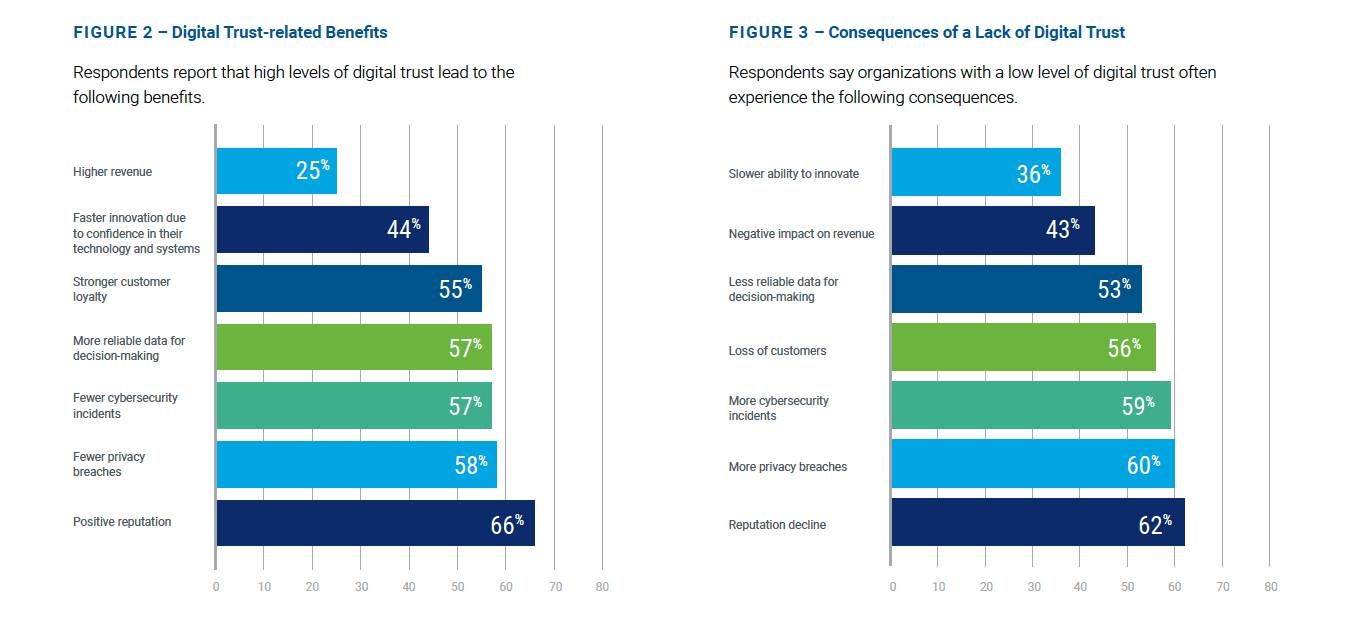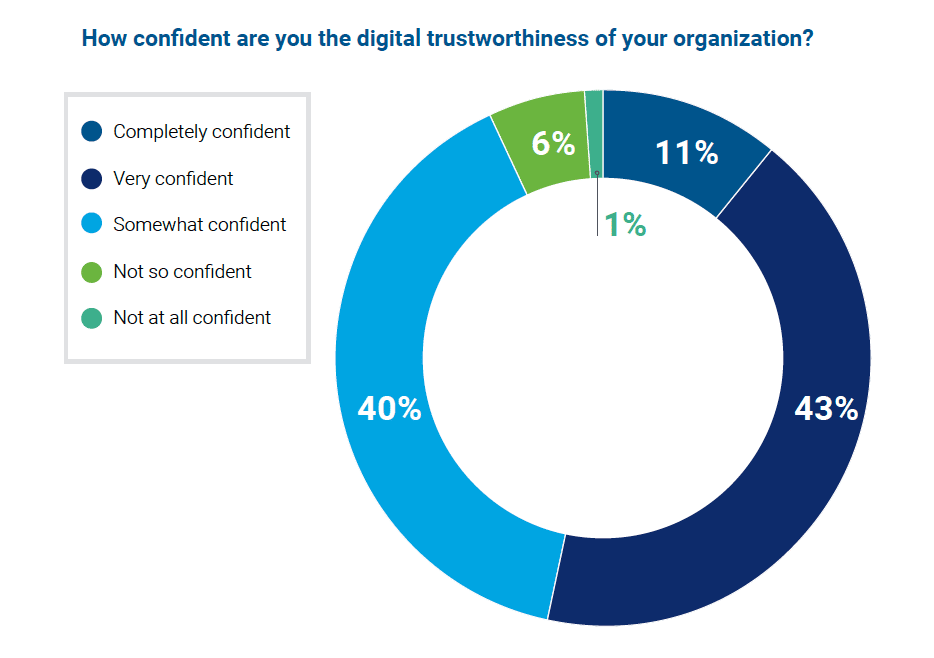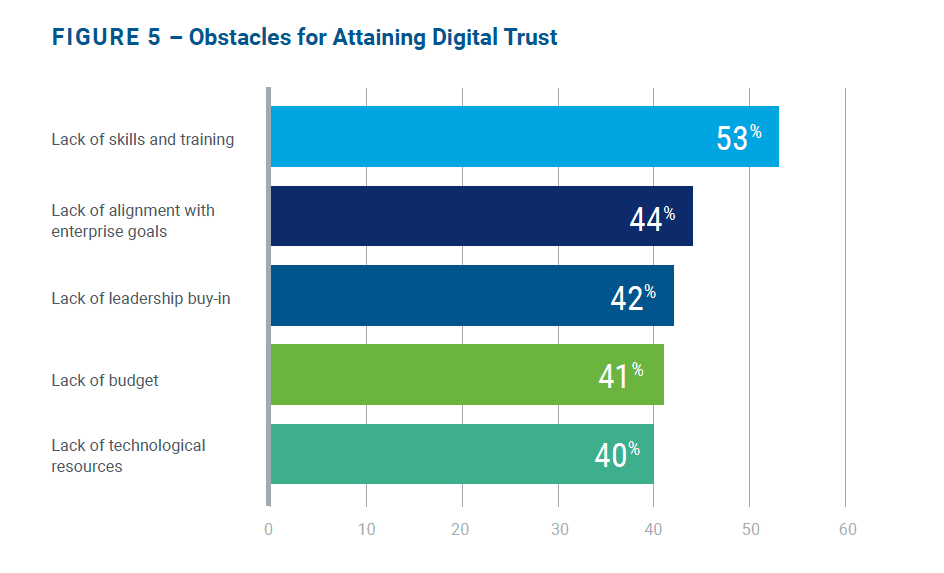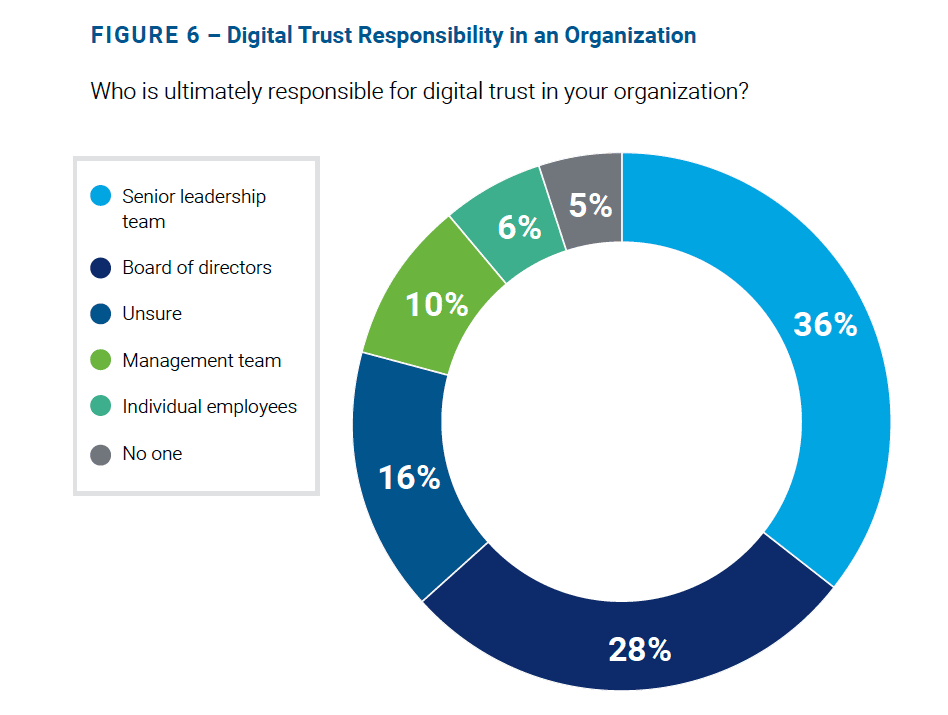New research from digital global community ISACA shows significant gaps between what enterprises are doing now and what they should be doing to establish leadership and earn customer trust in the future digital ecosystem in the race toward digital transformation.
The organization’s new State of Digital Trust 2022 report defines digital trust as the confidence in the integrity of relationships, interactions and transactions among providers and consumers within an associated digital ecosystem.
While 98 percent of respondents say that digital trust is important, only 12 percent of their organizations have a dedicated staff role for digital trust. Looking ahead, 82 percent say digital trust will be even more important in five years, yet only 29 percent offer staff digital trust training.
“Digital trust is the bedrock of business relationships, and is critical for strategic digital transformation,” said David Samuelson, chief executive officer at ISACA, in a news release. “Innovation, market leadership and financial performance rely heavily on trust that must be earned every day.”
Organizations with low digital trust experience reputation decline (62 percent), more privacy breaches (60 percent), more cybersecurity incidents (59 percent), lost customers (56 percent), less reliable data for decisions (53 percent), negative revenue impact (43 percent) and slower innovation (36 percent).
Obstacles
The most significant obstacles to digital trust are lack of skills and training (53 percent), lack of alignment with enterprise goals (44 percent), lack of leadership buy-in (42 percent), lack of budget (41 percent) and lack of technological resources (40 percent).
“Digital trust is a currency that must be backed by a robust validation process,” said Matt Chiodi, chief trust officer at Cerby, and a member of ISACA’s Digital Trust Council, in the release. “Trust must be earned, which means that in everything an organization does, the end goal must be answering the question, ‘What can we do today to better earn the trust of our customers?’ Those organizations that continually ask this question and make executing on the answers a priority will win in the future—win in market share, profitability and engagement with employees and customers.”
Benefits
Key benefits of having high levels of digital trust include:
- Positive reputation (66 percent)
- Fewer privacy breaches (58 percent)
- Fewer cybersecurity incidents (57 percent)
- Stronger customer loyalty (55 percent)
- Faster innovation (44 percent)
- Higher revenue (25 percent)
Growth opportunities
Respondents said the top three components of digital trust are security, data integrity and privacy, but only half agree there is sufficient collaboration among professionals in these and other digital trust fields.
Eighty-two percent say digital trust will be much more important in their organization and 28 percent say their organization will likely have a senior staff role dedicated to digital trust in five years.
Download the full report here.
The report offers insights from 2,755 international business and information technology professionals.







